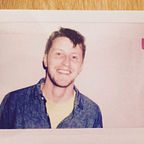Mapping unmet needs
Last summer British Red Cross did a discovery into fires and floods, which went on to become our Visible in Emergencies work. One output of the discovery was a kind of map. The map visually organised our findings into the timeline of a fire or flood.
I wanted to explain why the map was useful and how we made it.
Why bother making a map?
At first I was uneasy about making a map. Service design had got a bad reputation inside our organisation for sometimes only resulting in research printed on long bits of paper. Opposed to resulting in better services for people in crisis, British Red Cross staff and volunteers.
Nonetheless, towards the end of our discovery we realised we needed a map. We needed one for four reasons:
- One version of what we learned, we all agreed on as a team
- Help decide which unmet need our team should tackle
- Help communicate to stakeholders what we learned and why we decided what we decided
- To show in one place which needs British Red Cross is tackling through existing services
A needs map is good way of achieving these aims, as it showed all our findings in context with one another. That way people can see more easily the order in which unmet needs happen and the dependencies between them.
For us it helped to illustrate that without knowing who has been affected in emergencies, we cannot meet their other unmet needs.
How we made our map
What really took time making the map was not drawing it, but understanding what to draw. Seeing the finished map makes this appear obvious. Yet at the beginning of discovery and for many weeks it really wasn’t. It emerged slowly as our understanding of the problem space grew and matured. This took weeks of research, interviews, analysis and team conversations.
Once at this point we decided to include in our map:
- Unmet needs we uncovered in our 50 interviews
- Needs that turned out to not exist, but beforehand we assumed did
- Work British Red Cross was already doing to meet unmet needs
- When in an emergency unmet needs happen; before or in the hours, days, weeks, months and even years after
Content design
While I say we drew our map, in reality we wrote it. How it communicates relies almost entirely on words, rather than colours, lines and other graphics. We thought using too much graphics would distract from the content of our findings and make the map less accessible.
We took lots of time and thought to really craft our sentences. Using plain language and creating a glossary of common terms to ensure consistency and clarify what we meant by those terms. All of this was thinking about our audience who aren’t all experts in design or emergency response.
The map was a means to an end. It helped us get to the next stage in service design. So it did the job.
If you’re interested in content design, we recommend you read this book of the same name. It’s a team favourite.
